What Happens in a Man’s Body During Sex?
Male and female genitals are very different, but they are created in such a way that they fit perfectly together.
Male and female genitals are exactly the same for the first seven weeks of pregnancy. It’s only when the male fetus starts to produce the hormone called testosterone, that the genitals develop into male genitals.
It is useful for us to know a little about the differences between a man’s and a woman’s body. Knowledge can never replace the love and faithfulness that a man and a woman who are married to each other have. However, lack of knowledge can often create sexual problems which could otherwise easily have been avoided.
Male genitals comprise the penis and the scrotum. Most of the penis hangs outside the body and is covered by skin. This skin can easily be moved backwards and forwards. The end (or head) of the penis is often a bit thicker than the rest of it and is called the ‘glans’. The urethral opening is located at the end of the glans, and out of this come urine when you urinate or sperm when you have an orgasm. Inside the penis are three different areas of spongy tissue that fill with blood when the man is sexually aroused.
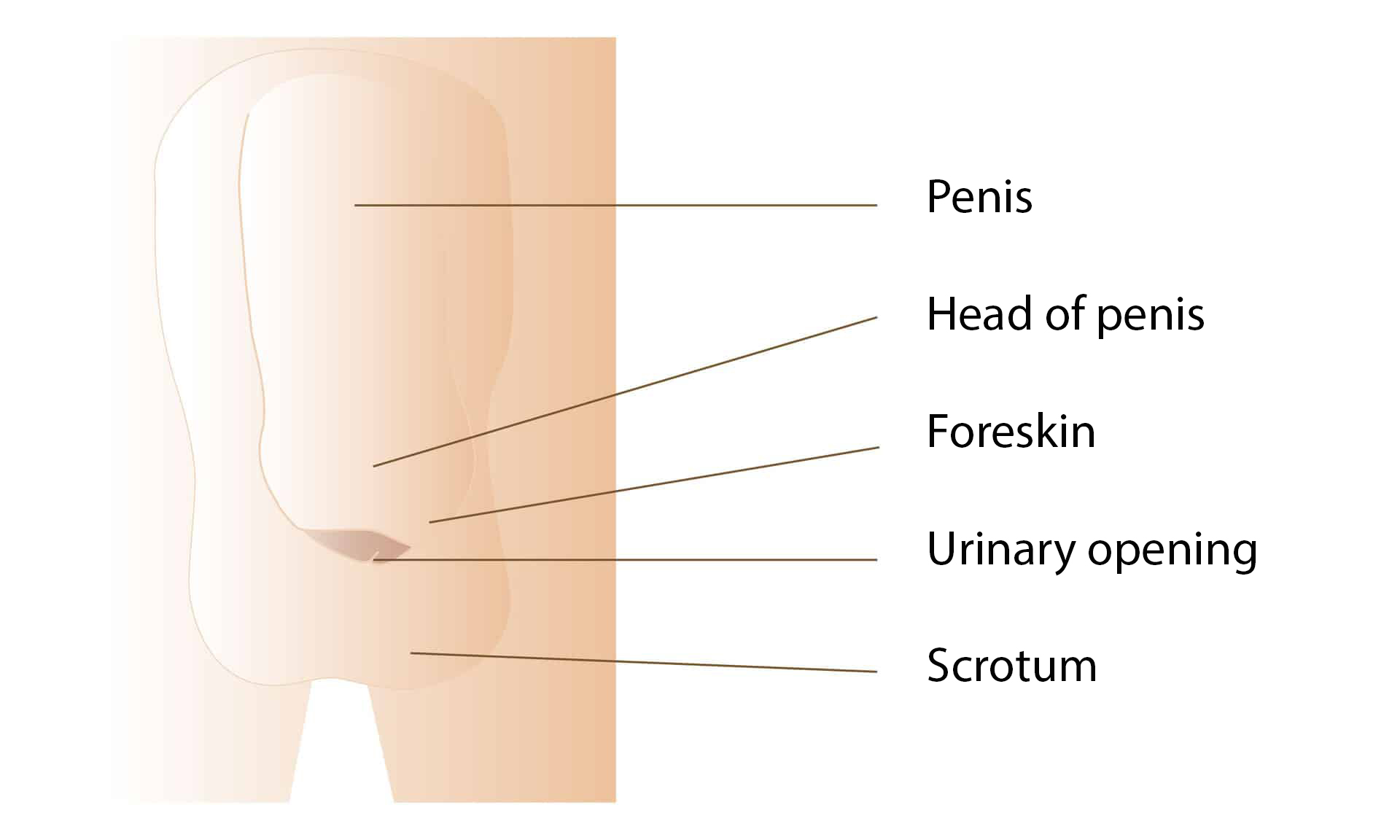
A man’s genitals comprise the penis and the scrotum.
The glans is covered by a fold of skin called the ‘foreskin’. This can be pulled back so that so that the glans appears. Some boys may experience that the opening of the foreskin is tight, so that the foreskin cannot be pulled back. This often rights itself as they grow, and in the few cases in which it does not improve, medical treatment is possible.
YOU MIGHT ALSO LIKE: God says YES! to sex / What happens in a woman’s body during sex? / What happens when boys reach puberty?
The glans contains many nerves and is therefore very sensitive. The glans is most sensitive underneath, where there is a little ridge of tissue from the glans to the foreskin. This is called the ‘frenulum’. When the skin around the penis moves during sexual intercourse, some of the movement is transferred to the sensitive area through the frenulum.
The urethra goes into the middle and thinnest area of spongy tissue on the underside of the penis from the urethral opening to the bladder. The three areas of spongy tissue are attached to the underside of the pelvic bones, and this part of the penis is almost as big as the visible part outside the body.
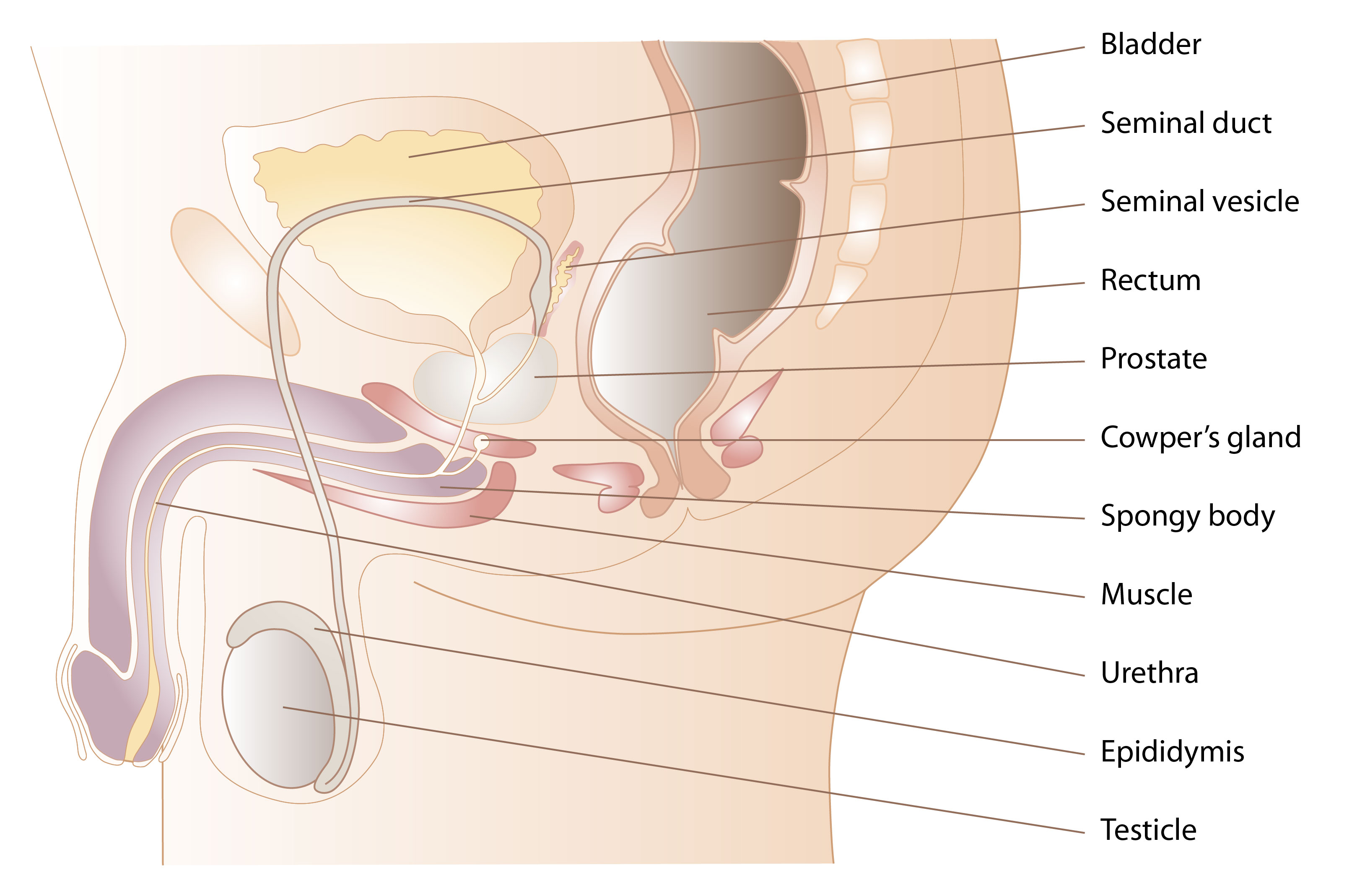
Male genitals seen from the side
The scrotum contains the two testicles, they produce sperm and a hormone called testosterone. Testosterone makes boys develop into men during puberty. The testicles are very sensitive and it can be very painful if they get squeezed. There is a duct from each testicle going to the so-called seminal glands and the prostate gland. Sperm cells come from the testicles, but the seminal glands and the prostate gland make most of the fluid that comes out when men have an orgasm. This fluid contains nourishment for the sperm cells so they can survive several days in the woman’s vagina.
Between the prostate gland and the penis are two small glands that produce a clear fluid. These are called Cowper’s glands. When a man is stimulated sexually this fluid comes into the urethra and some of it may leave the urethral opening. This is not normal seminal fluid, but nevertheless it may contain some sperm cells. This means that a woman can get pregnant if this fluid enters the vagina, even though the man has not had an orgasm.
Apart from some small muscle fibres in the urethra and the veins, the penis does not contain muscles. However, there are many muscles attached to the pelvic bones that influence the penis. The largest of these is often called the PC muscle (from the Latin: pubococcygeus). It is this muscle men tighten in order to stop urine flow while urinating. During orgasm the PC muscle contracts several times in succession. This helps to pump seminal fluid out of the penis.
It’s totally normal for a young man to reach orgasm more quickly than he would like to during intercourse. But it’s also possible to contract the PC muscles during intercourse in order to restrain sexual arousal and delay orgasm. It can help to do pelvic floor exercises. When the man has a strong PC muscle and good control over it, it is much easier to delay orgasm so that intercourse lasts long enough for the wife to reach orgasm.
Male sexual response
The researchers Masters & Johnson carried out extensive research to map out what happens in both the male and the female body during sexual activity. They describe four phases of sexual response which are the same for both men and women: excitement, plateau, orgasm and resolution.
1. Excitement
The first thing that happens with the male genitals is that the spongy tissues in the penis fill with blood. This is called an “erection”. The penis then grows in size, it becomes stiff and stands out or up. Some will stand straight out, others will stand to the side or upwards. It’s totally normal that the penis is a little curved or angled when it is stiff.
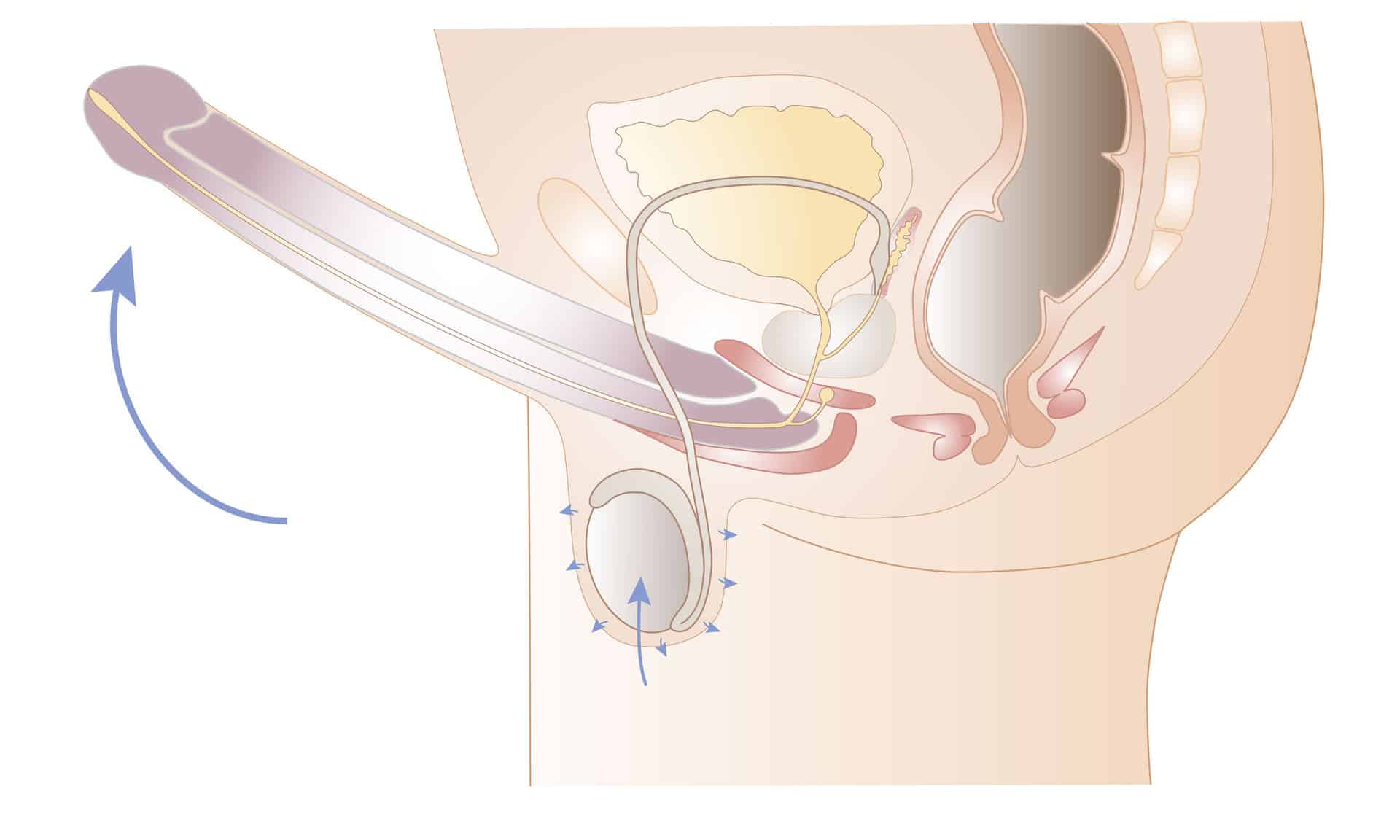 .
.
During the arousal phase, the spongy tissues in the penis are filled with blood so that the man gets an erection, the scrotum contracts and the testicles get closer to the body
There are small muscle fibres in the scrotum that make the scrotum contract and pull the testicles nearer the body. The glands between the prostate gland and the penis start to produce fluid which is discharged in the urethra. At the same time the man’s pulse and blood pressure increase as arousal becomes stronger. It’s quite normal for several muscles to tighten.
2. Plateau
When the man reaches the plateau phase his erection is at its strongest. The glans becomes even bigger and can appear reddish or violet due to the increased amount of blood. The pulse, blood pressure and muscles all react even more. Some men experience slight reflexive twitches in their body. Breathing becomes deeper and more rapid. Quite a few men appear to blush on their stomach, this may spread to the chest, neck and face. Cowper’s glands secrete a clear fluid into the urethra this can be discharged through the urethral opening.
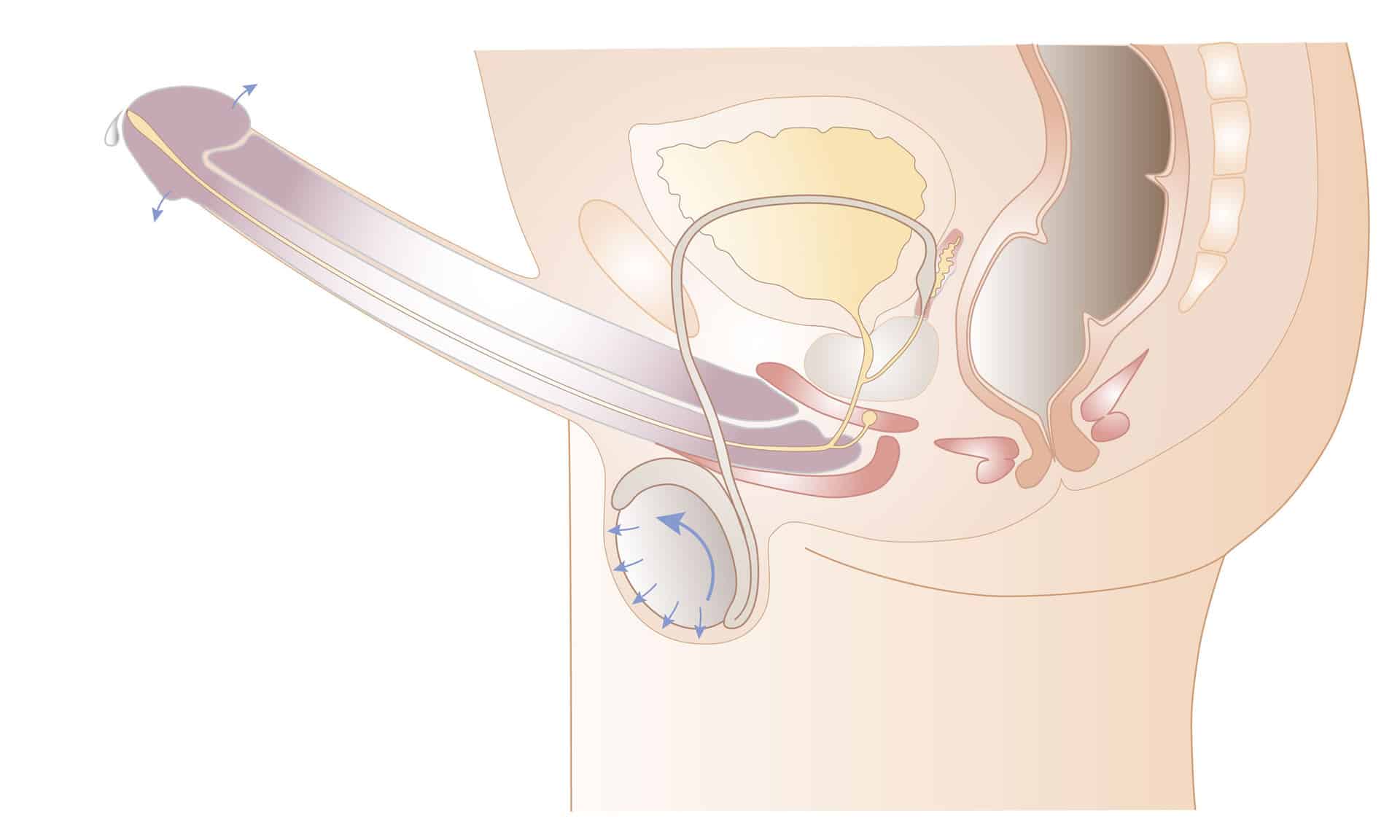
During the plateau phase, the spongy tissues become even more filled with blood so that the penis head becomes larger, the testicles turn slightly forward and the Cowper glands secrete a clear fluid.
Many men are not able to remain at this phase for longer than a short time before they reach orgasm. But by learning to relax and by training the PC muscles, much better control is possible. They can then stay at the plateau phase longer without having an orgasm.
3. Orgasm
When the orgasm approaches, a lot of fluid has already been produced in the seminal glands and the prostate gland. During orgasm the PC muscles and the other muscles around the penis and anus have regular contractions about once a second. These contractions weaken and are less frequent after some seconds.

During orgasm, the PC muscle and the other muscles contract with rhythmic contractions and the semen is pumped out through the urethral opening.
There are also muscles in the wall of the urethra that help to transport the seminal fluid through the penis. Muscle contractions (including the PC muscles) make seminal fluid spurt out of the urethral opening. It’s normal that the whole body is involved in the orgasm so the body moves during the orgasm.
4. Resolution
After orgasm blood leaves the areas of spongy tissue resulting in the penis getting smaller. The time this takes can vary but there may be a relationship between how long the erection lasted before orgasm.
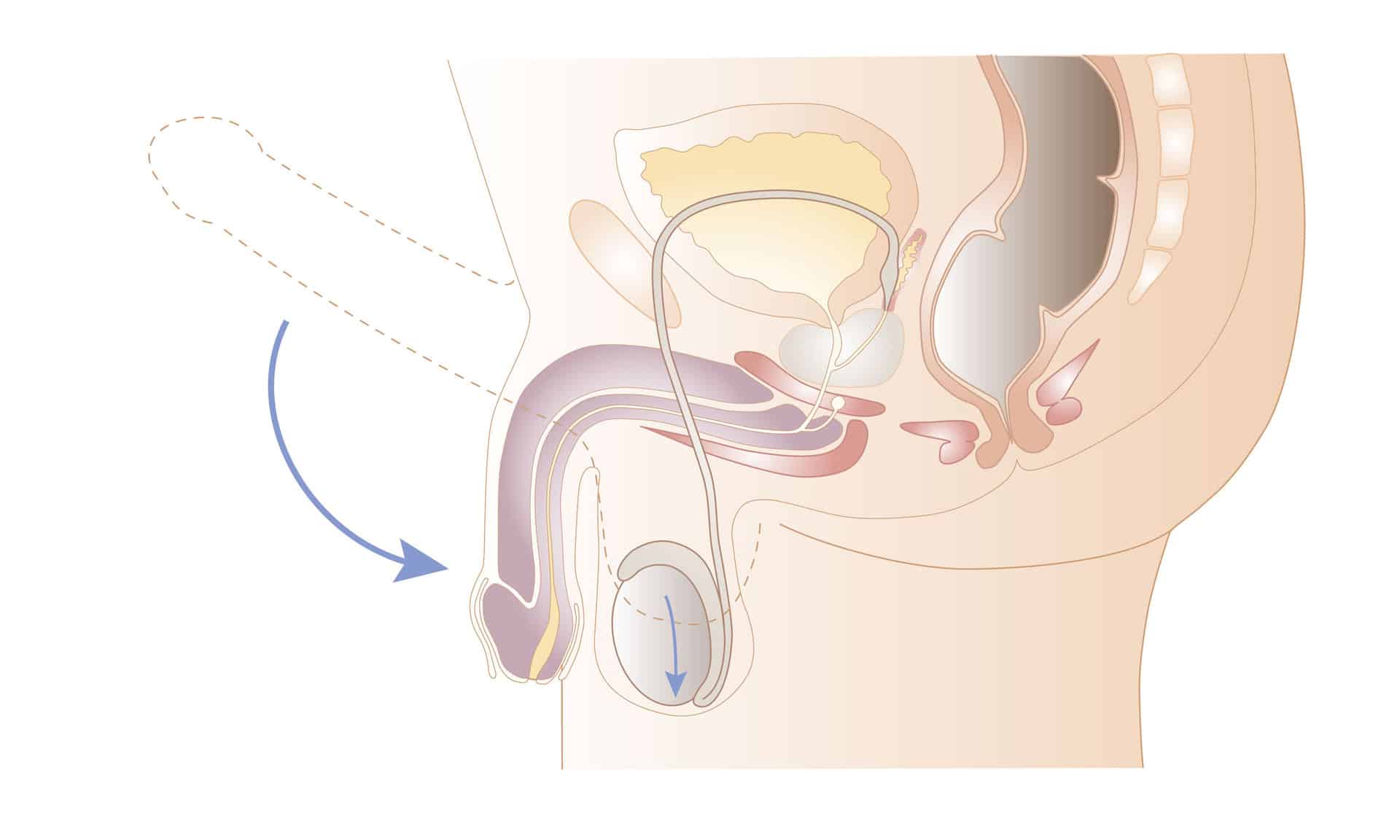
After orgasm, the penis gradually returns to its original size.
Firstly the penis returns about halfway to its pre-erection size. It takes longer before it is once more small and limp. The heart beats more slowly, breathing is more relaxed and the whole body is at rest.
When can the man have his next orgasm?
A certain amount of time must elapse before he can attain a full erection and have a new orgasm. During this time the man is less receptive to sexual stimulation and direct stimulation of the penis can in fact be uncomfortable or painful. Many men are very tired just after orgasm. This period can last from a few minutes to several hours, the period is shorter for younger men than for older men.
Different ways to respond
It is normal for sexual arousal to increase in intensity until the man reaches orgasm. The blue curve shows a typical response pattern for men.
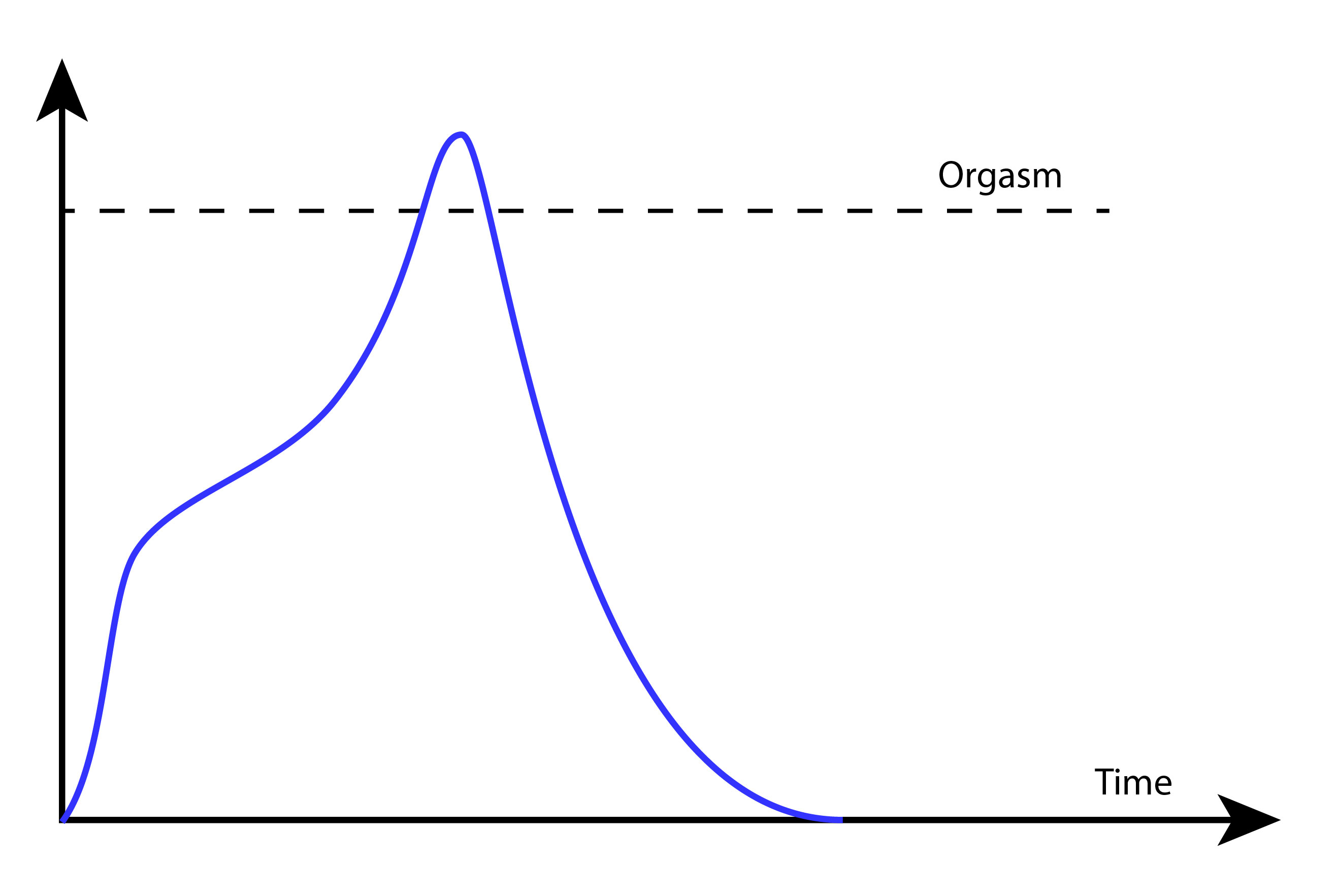
Arousal heightens rapidly in the excitement phase. During the plateau phase arousal is heightened all the time, until it suddenly becomes much stronger during orgasm. After orgasm arousal quickly falls back to normal.
Some young men can be so overwhelmed by sexual intercourse that they reach orgasm after just a few seconds. The red curve shows how arousal heightens very rapidly. Orgasm is attained very quickly and arousal declines quickly afterwards.
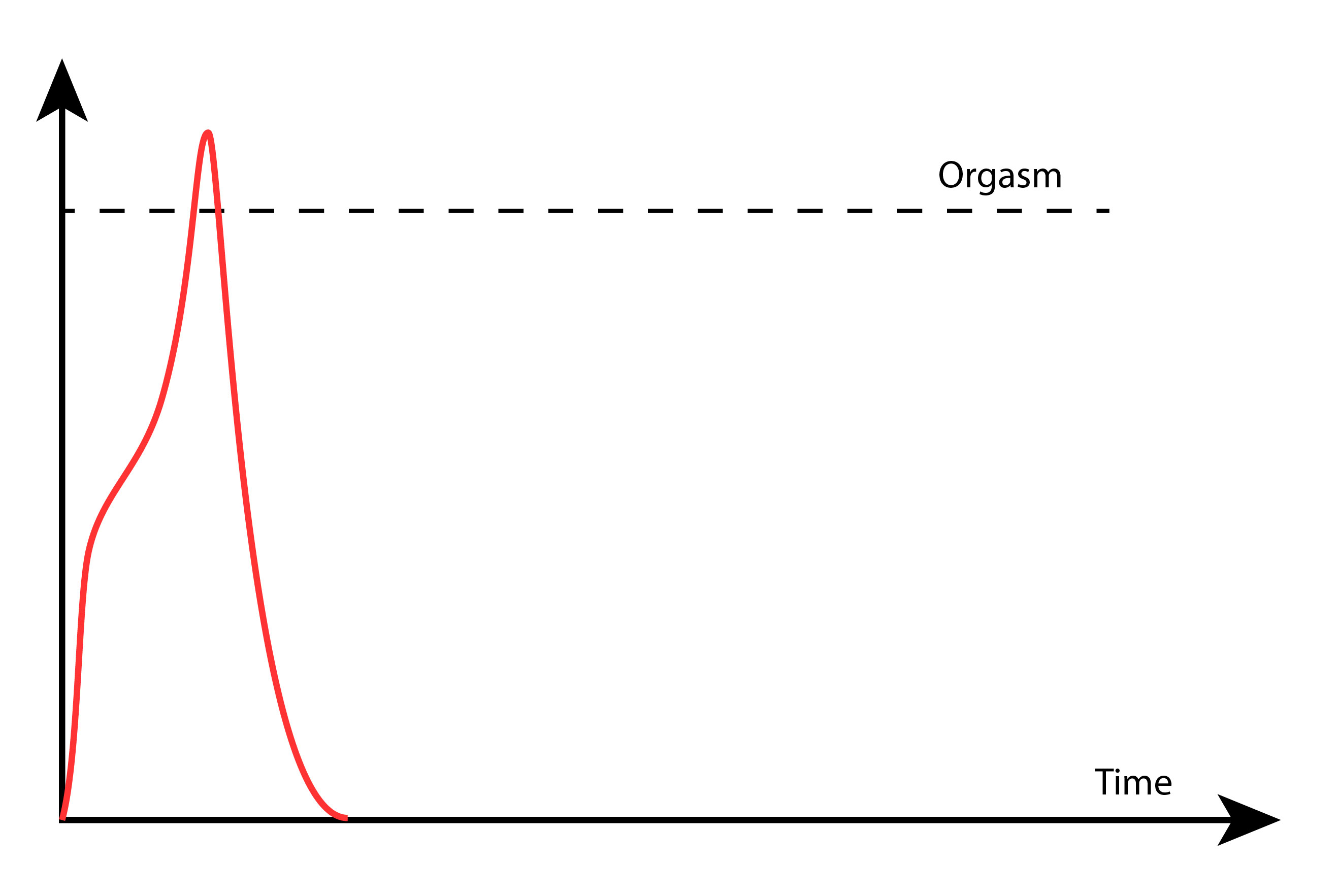
This is very normal at the start of a marriage; after the couple become more experienced the man will get better and better control over when he will orgasm. But if the man does not get better control, it can be a problem. This is called “premature ejaculation”.
There are some medicines that are prescribed for premature ejaculation in special cases, but it is usually enough to train the PC muscles and use them to reduce tension during intercourse. Performance-related anxiety and insecurity can also lead to premature ejaculation.
Even though men can achieve orgasm after a few minutes, women normally need 20–30 minutes of sexual stimulation before they reach orgasm. If the man has good control over the timing of his orgasm he can delay it so that it occurs at the same time as the woman’s or slightly after, as the blue and violet curves show.
We must remember it’s not a crisis if the man reaches orgasm too early or if the woman does not orgasm at all. Many women relate that they enjoy sexual contact with their husband without achieving orgasm. However, it can be frustrating if the man always reaches orgasm too early while the woman seldom or never has an orgasm.
As a married couple you can spend time getting to know each other’s body better. Over time, as you become more secure talking about sex with each other, you can also help each other so it is as good as possible for both of you. In a lifelong marriage you have your whole life ahead of you, in which to get to know your own and your partner’s body better. Marriage puts sex life in a safe framework, which provides the best basis from which to solve these problems together.